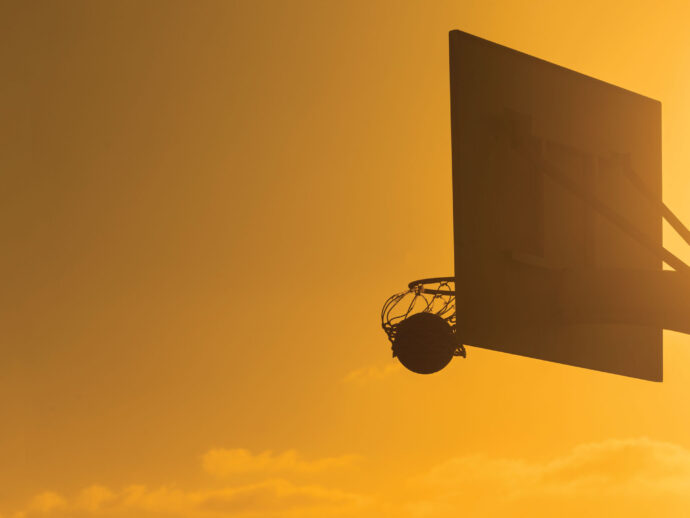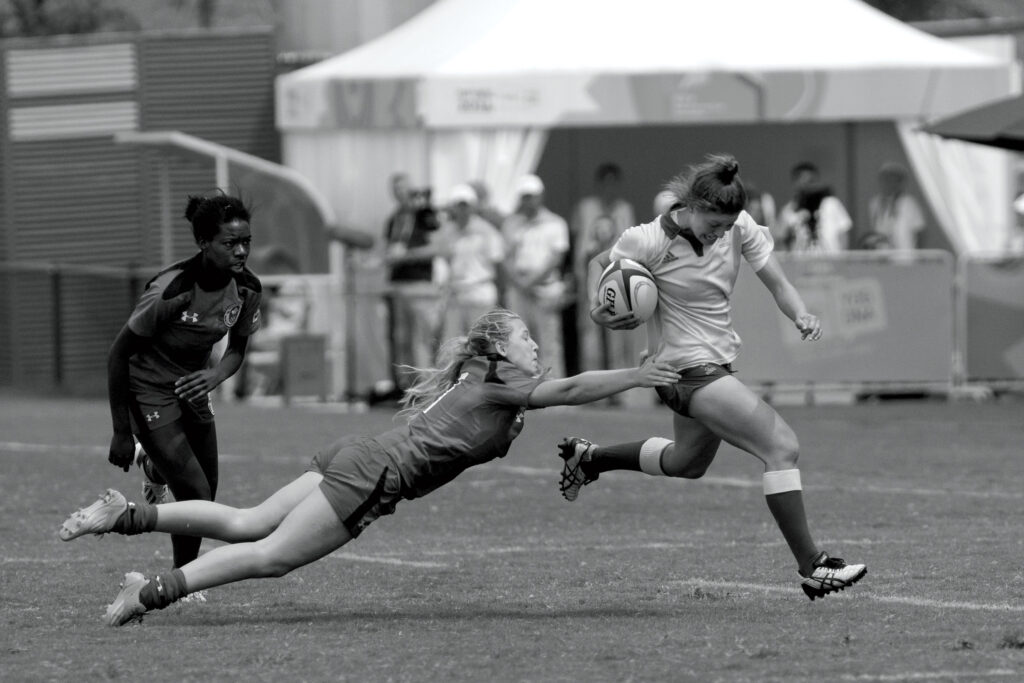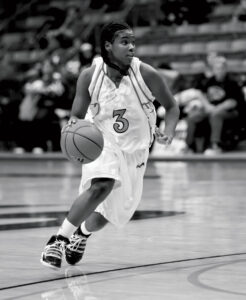
We’re slowly coming to recognize that concussions are more than just a knock to the head. We owe it to ourselves, the weekend warriors and parents of young athletes, to stay up to date with the latest knowledge on this evolving concern.
Sport-related concussions (SRCs) are considered one of the most difficult injuries to diagnose and manage. Like many of the sports in which they occur, they’re unpredictable and never static. The science behind SRCs is still evolving, with medical guidelines being updated every few years.
As trained medical personnel are often not available at sporting events, it’s essential for us, the weekend warriors and parents of young athletes, to stay current to protect ourselves and our children.
Traumatic brain injury
An SRC falls under the category of a traumatic brain injury. It occurs when an outside force, such as from another person or from sporting equipment, causes a direct blow to the body with a resultant force transmitted to the head. The nerve cells in the brain undergo mechanical stress, causing changes to our neurological function.
Signs and symptoms
Typically, symptoms come on quickly, and can change very rapidly within the first few hours. Anyone suspected of having an SRC should be closely monitored during this time. Symptoms are extremely varied, making it difficult to predict how a person with an SRC will feel or behave.
Varied signs and symptoms
| Category | Examples |
| somatic | headaches, dizziness, sensitivity to light and sound, nausea |
| balance | unsteady walking |
| behaviour | irritability |
| cognitive | poor concentration, confusion, feeling “foggy” |
| sleep | trouble falling asleep, drowsiness |
| emotions | sadness, anxiety, more emotional |
Lesser known facts
- Most concussions do not involve a loss of consciousness.
- SRCs do not show evidence of damage on MRI or CT scans.
- Across the same sports, girls have higher rates of concussion.
- The word “concussion” is derived from the Latin word concutere, meaning “to shake violently.”
When in doubt, sit them out
The pace of a game can make it difficult to determine if a concussion has taken place. SRC experts recommend erring on the side of caution if one is suspected and removing the athlete from the game immediately. A licensed health care practitioner who is trained in SRC management should then evaluate the athlete on the sideline.
Sideline screening
The most established tool available for sideline use by trained professionals is the Sport Concussion Assessment Tool (SCAT5).
Individuals who are not medically trained can refer to the Concussion Recognition Tool (CRT5). Although not a substitute for medical diagnosis, the CRT5 provides guidance for recognizing a possible SRC, including when to remove an athlete from play. It can be downloaded at no cost at bjsm.bmj.com/content/51/11/872.
Immediately following injury, an athlete may not realize they’re concussed, or they may deny certain symptoms to avoid being pulled from the game. It’s crucial to remember that any player with a suspected concussion must not return to play that day.
Seeing the doctor
Every athlete should visit a physician as soon as possible to determine the extent of their injury, regardless of whether they were seen after playing or whether they are already improving. The doctor will evaluate the athlete’s neurological function, including mental status, sensation, vision, coordination, and balance.
Resting body and brain
The initial 24 to 48 hours should be spent resting from physical and mental activities, including screen time. Just like an ankle requires rest from weight-bearing activity following a sprain, the brain requires rest from mental activity after a head injury. Even tasks that don’t seem to require much effort, such as scrolling through your social media feed, exert stress on the brain and should be avoided.
Returning to school
It’s highly recommended that children return to school before they return to sport, following a strict stage-by-stage process. Students may require a temporary absence from school, and experts advise that schools accommodate students with individualized support.
Returning to sport
Return to sport is also a step-by-step process, regardless of the individual’s level of competition. The process takes a minimum of one week, with each step taking at least 24 hours. If symptoms return at any stage, the athlete must return to the previous stage until they can get through that stage without symptoms.
| Stage of return to sport | Activity | Special considerations |
| Rest | no physical or mental activity | no screen time; no reading |
| 1 | light activity at home (putting away dishes) | intensity must not reproduce symptoms |
| 2 | light aerobic exercise (walking or stationary biking) | increase heart rate gradually; no strength training |
| 3 | sport-specific exercises (running or simple drills) | non-contact only |
| 4 | harder drills with more concentration; strength training | non-contact drills only |
| 5 | full contact practice | must be cleared by doctor |
| 6 | full return to competition |
Summarized from The Consensus Statement on Concussion in Sport (5th edition, 2016)
Sports with high risk
- football
- ice hockey
- lacrosse
- soccer
- wrestling
- basketball
- skiing
- snowboarding
- rugby
Recovery time
The majority of SRCs in children, adolescents, and adults resolve within four weeks. However, physical and mental symptoms may not recover at the same rate. A doctor, over several visits, can determine when both physical symptoms and mental impairments have resolved. Returning to school or sport too early increases risk of re-injury and long-term complications.
An invisible injury
An injury to the brain is often invisible to an outsider. For example, an athlete may appear fully recovered while they’re still struggling to concentrate or make decisions. This may lead to challenges at school or work and frustrations for all involved. All parties need to respect that the brain is an incredibly dynamic organ with its own timeline for healing.
Long-term effects
Former athletes of contact sports have shown an association between multiple concussions and depression and mental deficits later in life. The long-term consequences of repeat concussions are a developing area of research and one to keep our eyes on.
Prevention research
| Equipment / policy | The evidence |
| helmets | Research supports the wearing of helmets for preventing SRCs in sports such as skiing and snowboarding. |
| mouthguards | Research shows support for wearing mouthguards in sports such as basketball, ice hockey, and rugby. |
| body checking | Eliminating body checking in youth hockey has been shown to decrease the risk of SRCs. |
| contact training | Limiting contact training in youth and high school (American) football reduced the number of head impacts. |

Holistic care
No two SRCs are ever the same, even in the case of multiple concussions within the same individual. Consider taking a holistic approach to address your individual needs. Keep an eye on your stress levels, treat any associated injuries (whiplash is common), consume nutrient-rich foods, get adequate sleep, and arrange any necessary modifications for school and work.




































